
In 1728, portraits of the Golitsyn couple, Prince Ivan Alekseevich and his wife were painted by Andrey Matveyev. He was supposed to capture these representatives of a noble family for posterity. In the European art of the XVIII century there were strong rules according to which such portraits were written.
The model should be depicted in lush vestments and a proud pose corresponding to the height of her social position. Late Baroque style had a whole arsenal of techniques for creating the most magnificent impression.
This included bold turns of figures captured in motion, fluttering in the wind or whimsically piling up, folds of luxurious clothes, and suddenly opening background space. That is why the seventy-year-old I. A. Golitsyn, a kind and quiet person who took the place of the room steward under Tsar Ivan Alekseevich, but who avoided the service and now and then condescendingly freed her from Peter, is depicted by Matveyev as a youthful slender knight.
Soft curls of a wig adorn his head with a light air halo, a transparent white scarf around his neck is dazzling, a brilliant dark armor with red reflections from a heavy mantle thrown on top cover the belligerently unfolded figure. A strongly darkened from time background with a picture of a cloudy sky gives the portrait a majestic scale. But Ivan Alekseevich Golitsin was a quiet, timid and prayerful man. His proud posture and military armor do not hide the cowardice and mental weakness of nature.
Matveyev avoids the usual bravura and in the canonical framework of the ceremonial portrait, as if by a miracle, creates an image approaching the lyrical, in the subtlety of the spiritual characteristics. The face of a brilliant knight, somehow shyly glowing, reveals that gentleness that distinguished I, A, Golitsyn, who died a hermit in a hermitage a year after portraying.
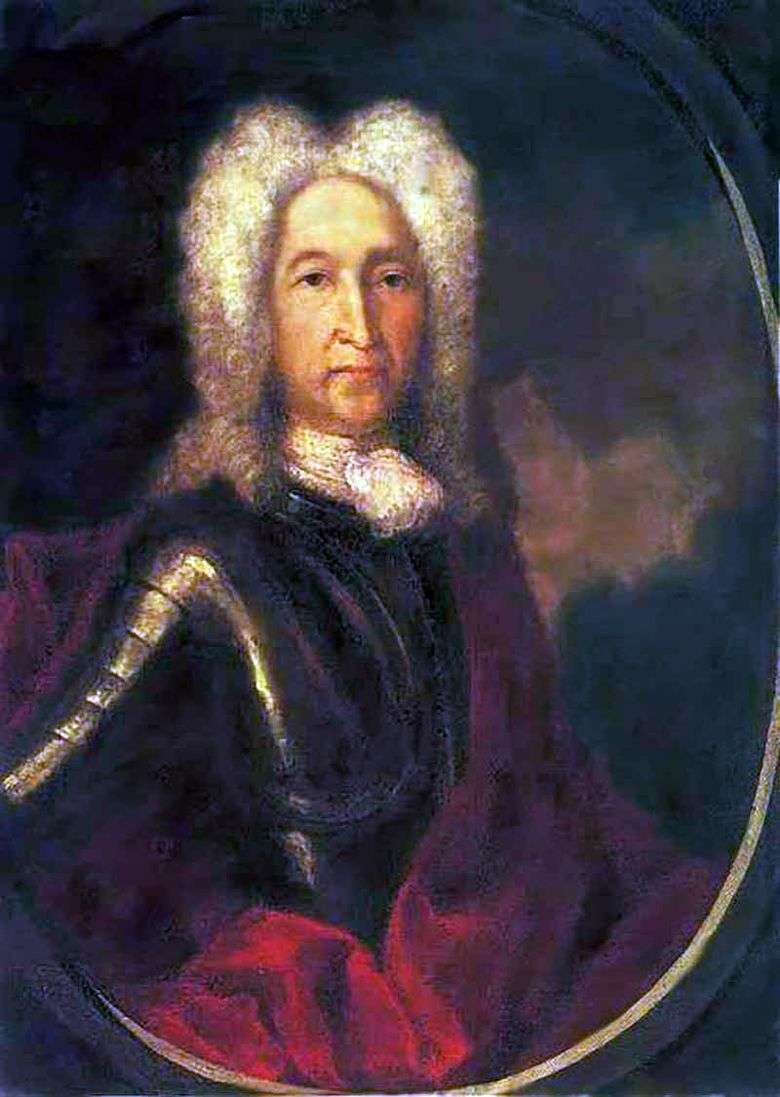 Retrato de I. A. Golitsyn – Andrey Matveyev
Retrato de I. A. Golitsyn – Andrey Matveyev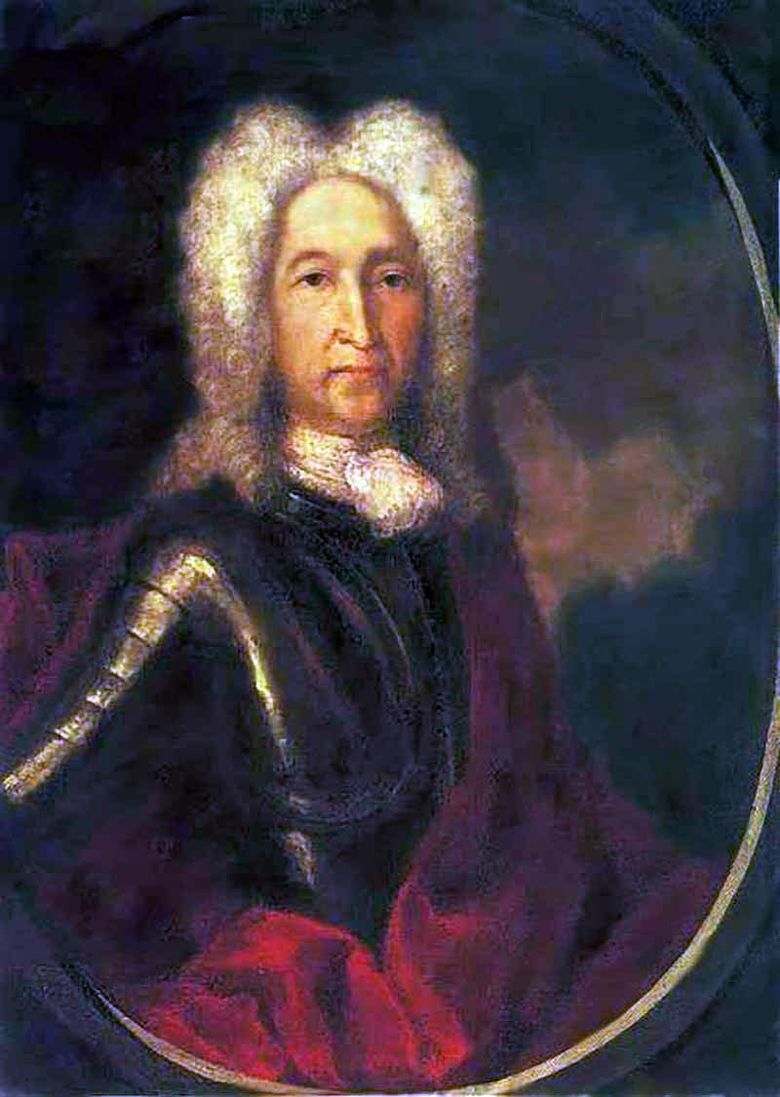 Portrait de I. A. Golitsyn – Andrey Matveev
Portrait de I. A. Golitsyn – Andrey Matveev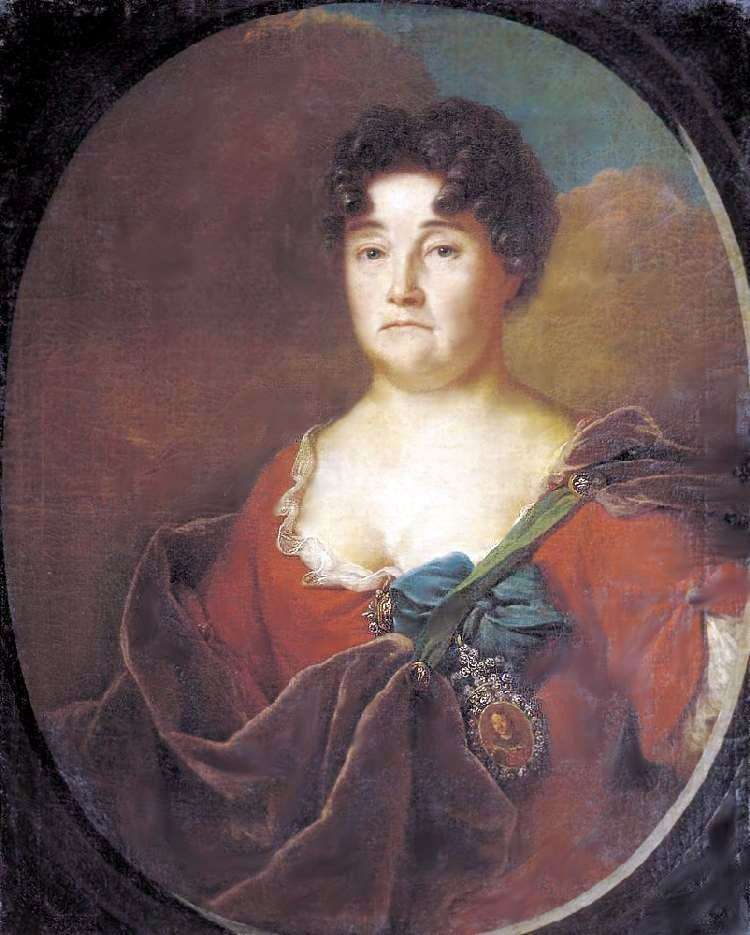 Portrait of A. P. Golitsyna by Andrey Matveyev
Portrait of A. P. Golitsyna by Andrey Matveyev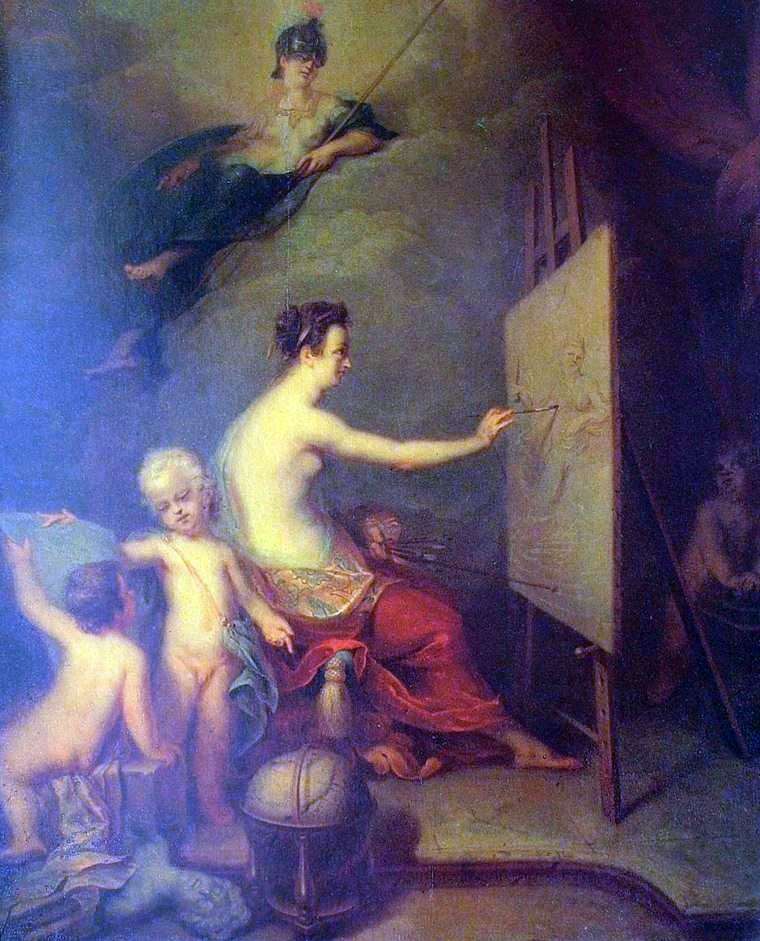 Allegory of Painting by Andrey Matveyev
Allegory of Painting by Andrey Matveyev Portrait of a doctor I. A. Acaretti by Andrey Matveyev
Portrait of a doctor I. A. Acaretti by Andrey Matveyev Self-portrait with wife Irina Stepanovna by Andrey Matveev
Self-portrait with wife Irina Stepanovna by Andrey Matveev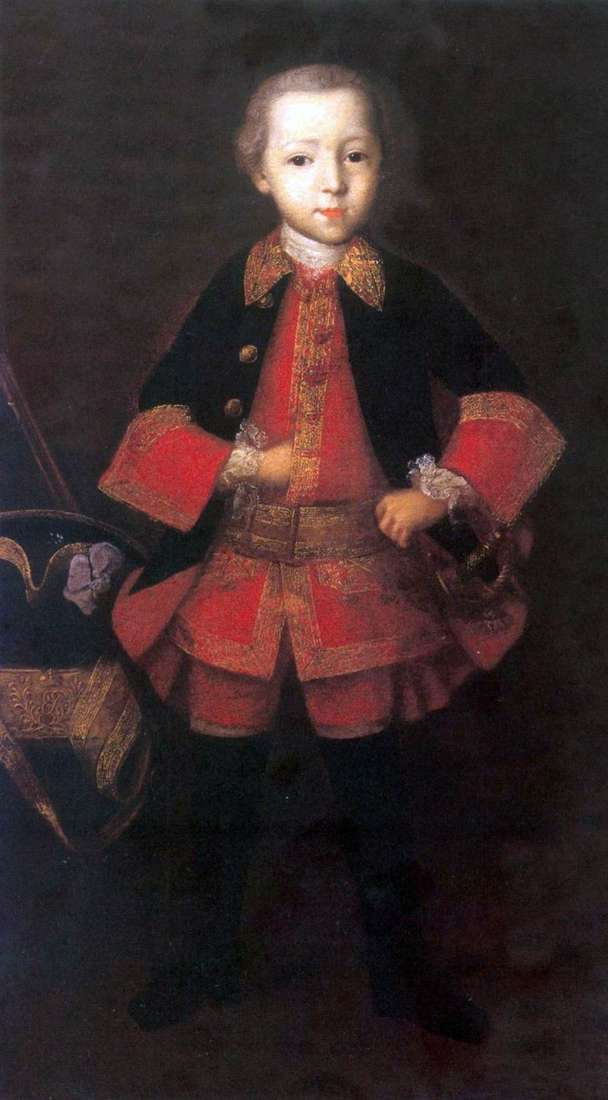 Portrait of FN Golitsyn in his childhood by Ivan Vishnyakov
Portrait of FN Golitsyn in his childhood by Ivan Vishnyakov Alegoría de la pintura – Andrey Matveyev
Alegoría de la pintura – Andrey Matveyev